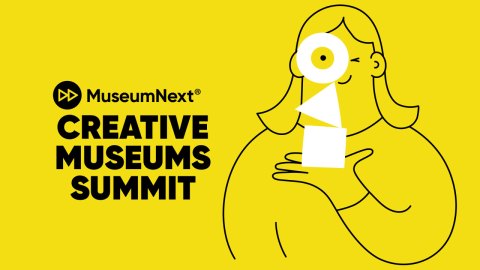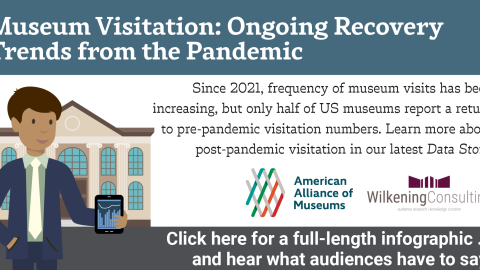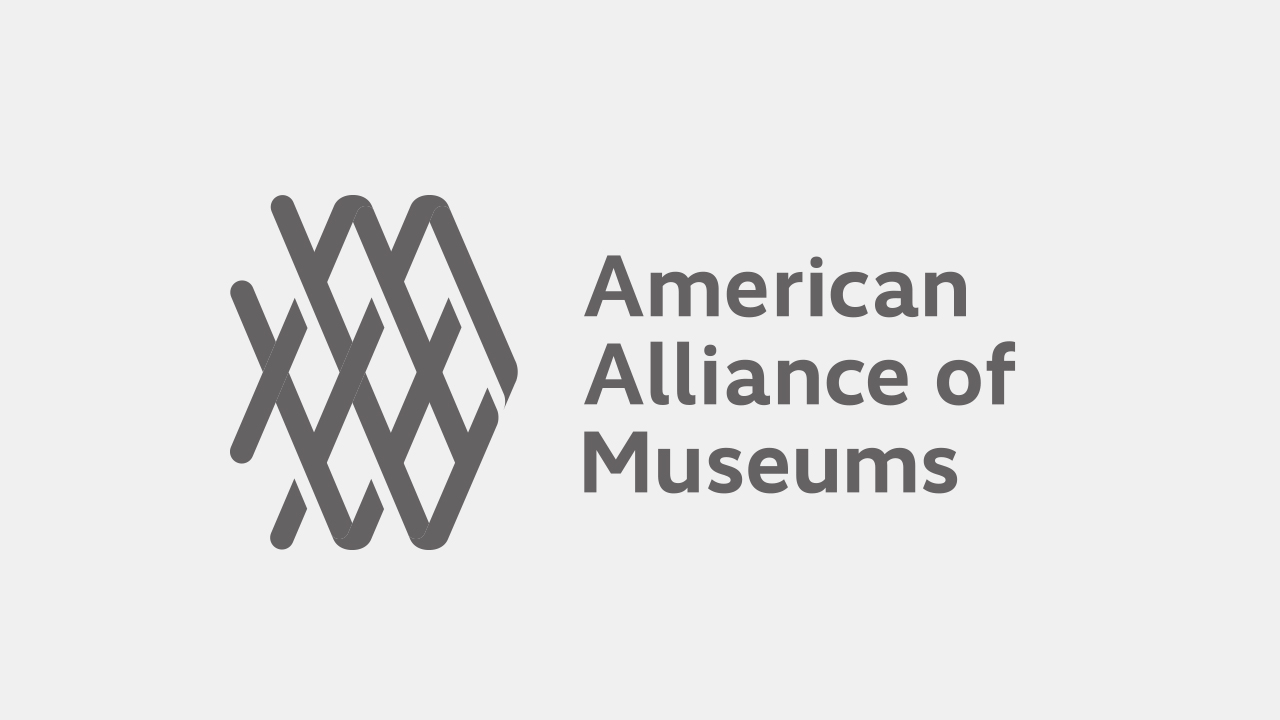
A comprehensive tipsheet on working with vendors to ensure the final exhibit meets the museum’s objectives. This tipsheet was developed by Carrie Ericson, CEO of SpeedPro East Bay. The information shared here was current at the time of publication.
You’re no stranger to the careful planning, creativity, and collaboration required to create a museum exhibit that engages the senses, provokes deep thinking, and educates. You know all about meeting deadlines and pivoting when there are major issues or delays, all to ensure that your exhibit goes live on the targeted opening date.
These factors make choosing which vendors you work with and determining how to work with them even more crucial for preventing unnecessary stress and tension during your project. The way you collaborate with vendors can make or break how the exhibition comes together: a crooked poster, a pixelated display board, or an element that is just a half an inch too big – can mean the difference between a sloppy opening or even worse, a delayed opening, and puts your reputation on the line. By following the steps below, you can improve your vendor coordination process and ensure the final exhibit meets the museum’s objectives and comes together flawlessly. Here’s how to better navigate the vendor process:
Step 1. Research and Vet Potential Vendors
Choosing a vendor with the right skillset or equipment can be a hard decision – especially with what can feel like a nearly endless set of vendor options on the internet. But there are a few key details that can help you evaluate vendors’ quality of work, reputation, and fit for your specific project needs. This step is vital for ensuring that the vendor you choose not only has the technical capabilities but also understands what you are trying to accomplish.
Start by reviewing the vendors’ portfolios. A strong portfolio that includes museum-specific projects is a good indicator of a vendor’s experience in this area, for example, previous work on similar exhibits or innovative approaches to display and installation. Don’t hesitate to ask vendors for specific case studies of their work, as that can give you good insight into their problem-solving abilities and how they might handle any challenges that arise.
When vetting vendors, consider the following:
- Portfolio Quality: Does the vendor’s portfolio demonstrate its ability to handle museum-specific projects? Look for detailed examples.
- Vendor’s Reputation: Check online reviews and seek referrals from other museums. Personal recommendations can be invaluable for assessing a vendor’s reliability and quality.
- In-Person Evaluations: If possible, visit other museums where the vendor has completed work. This will give you a firsthand look at the quality of their installations and how well they’ve integrated with the museum environment. A visit to the vendor’s production studio may be even more beneficial. The way a vendor organizes their production facility is often a good indication of their approach to working with a client.
Step 2. Clearly Define Requirements and Specifications
The foundation of any successful exhibit starts with a clear definition of your requirements. This may sound simple and obvious, but there’s likely a laundry list of items and specifications that you should include in your request for proposal (RFP).
Defining your requirements starts with articulating the exhibit’s themes, aesthetics, and technical needs; don’t skimp on sharing these specifics as these are the details that your vendor will use to help you avoid any last-minute surprises that could disrupt the project. The vendor needs to know not only what they are producing but why– as well as how that rationale relates to the materials you will use to ensure you are following through on the exhibit’s themes.
When preparing your list of specifications consider the following:
- Specify Pantone colors or exact CMYK codes for accurate color matching.
- Specify matte, glossy, or luster finish based on the lighting conditions in the exhibit space. Choosing the right type of paint can prevent glare and reflections that might obscure the content.
- Request anti-glare coatings for any printed or laminated pieces placed near strong light sources or windows.
- Provide details on how exhibit elements will be mounted or installed (e.g., adhesive backing, hanging grommets, or frames), and ensure the vendor understands these requirements.
- Specify clean edge finishing options, such as hemmed edges or protective lamination, to prevent fraying or damage during installation and the duration of the exhibition.
- Specify environmentally friendly inks (e.g., low-VOC, UV-cured) and sustainable printing processes, especially if the museum prioritizes eco-friendly practices.
- Set precise tolerances for cutting and trimming to ensure that final prints align perfectly with mounting elements or other parts of the exhibit structure.
- Ensure that any bleed areas are properly accounted for in the file setup to avoid unintended cropping of important design elements.
- Specify if any exhibit elements require interactive components (e.g., layered prints, transparent overlays) and ensure that the printing vendor understands how these need to be aligned or assembled.
- Provide detailed file setup requirements (e.g., CMYK color mode, 1/8″ bleed for cuts, outlined fonts) to ensure all print files are production-ready.
- Require the vendor to conduct a pre-press check to identify any file issues (missing fonts, incorrect color profiles, resolution problems).
- Specify proper packaging for delicate or large-format prints to avoid damage during delivery or shipping (e.g., rolled prints in tubes, or flat-packed with protective layers).
And ask the following questions:
- Does the vendor perform regular printer calibration for consistency in color throughout the print run?
- Do they provide archival-quality materials to ensure longevity and prevent fading or wear over time?
- If sustainability is a concern, is the vendor able to print on recycled or recyclable materials?
While the list above will help you nail the visual appeal of the exhibit, when outlining your requirements, it is also important to consider the materials you will use and their long-term durability. For instance, if your exhibit involves interactive elements that invite visitors to touch and engage with the display, you will need materials that can withstand frequent handling. Alternatively, if your exhibit is outdoors or in an area prone to environmental factors, materials resistant to weather, graffiti, and other forms of wear are essential. This not only preserves the exhibit’s integrity but also reduces maintenance costs over time.
Budgeting is also another important factor. While vendors can work within a wide range of budgets, it’s crucial that they know your limits upfront. A clear budget helps vendors suggest appropriate materials and solutions, such as choosing between high-end acrylic prints or more affordable foam core options. Discussing money can be uncomfortable, but if you communicate any constraints on your budget in the beginning, vendors will be able to propose creative solutions that meet both your aesthetic and financial goals.
Finally, set clear timelines. Different materials and production methods require varying lead times, and a well-communicated timeline ensures that your exhibit will be completed on schedule. Be sure to include several buffer days for unforeseen delays; this is particularly important for large, complex exhibits where even minor delays can cause significant setbacks because of the domino effect smaller element delays can have.
Step 3. Request Comprehensive Proposals
Once you’ve narrowed down your list of potential vendors and have compiled your list of specifications above, the next step is to request a detailed proposal. A well-structured RFP is essential for obtaining comprehensive and comparable responses. This document not only outlines your project requirements but also sets the stage for a transparent and efficient selection process.
When drafting your RFP, start with a clear and detailed description of your project’s goals. Include specifics about the materials you want, the desired outcomes, and any technical specifications that are non-negotiable. For example, if you require ADA-compliant signage or need to accommodate multiple languages, state so clearly in the RFP. Providing this level of detail helps vendors understand the full scope of the project from the beginning.
Ask vendors to provide client testimonials, case studies, or examples of similar projects they have completed. This will help you get a clear idea of whether the vendor can deliver the quality and type of work you need.
Ask for a breakdown of their project management approach. How do they handle timelines? What is their process for dealing with unexpected changes or delays? The answer to these questions provide insight into a vendor’s ability to manage complex projects.
Finally, don’t overlook the importance of communication and responsiveness. Pay attention to how quickly and thoroughly vendors respond to your RFP. Prompt and detailed responses can be a good indicator of their commitment to the project and their ability to meet deadlines. Vendors who are slow to respond or provide vague answers may struggle with the fast-paced demands of exhibit production.
Step 4. Negotiate and Finalize Contracts
Negotiating contracts is one of the most crucial stages in the vendor relationship. A well-drafted contract protects both parties by clearly outlining expectations, deliverables, timelines, and payment schedules. This document serves as the blueprint for your collaboration and helps prevent misunderstandings that could lead to delays or cost overruns.
Start by defining the scope of work in precise terms. This includes specifying who is responsible for each aspect of the project, from the production of materials to their installation. For instance, if the vendor is responsible for delivering and installing the exhibit, make sure these tasks are clearly outlined in the contract. Specify whether the vendor will simply deliver the materials to a loading dock or if they are expected to complete the installation in its final location. Don’t forget to specify if the vendor will be expected to install the exhibit outside of standard business hours. Many vendors charge more for working after hours or on a weekend.
Another critical element is the change order process. Changes are inevitable in any project, but they need to be managed carefully to avoid scope creep and unexpected costs. Your contract should outline how change requests are to be handled, including the number of revisions allowed within the agreed-upon price. Additionally, it’s important to include clauses that address what happens if timelines change. For example, if the museum delays the installation by several months, how will this affect the vendor’s costs and payment schedule? Spell out these contingencies should be clearly spelled out to prevent disputes down the line.
Clarify who on your team is authorized to make decisions and request changes. This prevents confusion and ensures that all modifications are approved at the appropriate level. It’s also a good practice to establish a protocol for communicating these changes to the vendor, which will ensure everyone stays on the same page.
Step 5. Collaborate and Communicate Throughout the Design Phase
Effective collaboration can help ensure the final exhibit aligns with your vision. This involves more than just exchanging emails or texts—it requires regular, meaningful communication and a willingness to involve the vendor early in the design process. By fostering a collaborative relationship, you can leverage the vendor’s expertise to enhance your exhibit. Be sure to bake these best practices into your process:
- Site Visits: Have vendors visit the museum to understand the space and materials. This hands-on approach helps ensure seamless integration of the new exhibit with the existing environment and is also an important time for them to check measurements.
- Regular Meetings: Schedule consistent check-ins to discuss progress, address any concerns, and make adjustments as needed.
- Flexibility: Stay open to the vendor’s suggestions. Their experience with various materials and installation techniques can provide valuable insights that may improve your exhibit or reduce costs.
For larger projects, consider having a dedicated project manager who can coordinate between the museum and the vendor. This ensures that everyone stays aligned with the project’s goals and can address any issues promptly. In smaller projects, regular phone or video calls can suffice, but the principle remains the same: consistent communication is key.
Step 6. Manage Timelines and Addressing Issues Promptly
Even with the best planning, issues can arise during the production and installation of an exhibit. The key to managing these challenges effectively is proactive communication and having contingency plans in place. By anticipating potential problems and addressing them early, you can minimize their impact on the project.
Start by working with your vendor to establish a realistic timeline. This should be based on the final installation date, with clear milestones for when materials need to be finalized, produced, and delivered. For example, dye-sublimated fabric on custom-made aluminum frames may require several weeks of lead time, while simpler prints on foam core can be completed in a matter of days. Understanding these timelines allows you to plan accordingly and avoid last-minute rushes that could compromise quality.
Contingency planning is equally important. Discuss potential challenges with your vendor during the early stages of the project and agree on strategies for addressing them. This might involve identifying backup suppliers, allocating additional time for critical tasks, or setting aside a portion of the budget for unexpected expenses. Having these plans in place can help you navigate issues more smoothly when they arise.
When problems do occur, the focus should be on joint problem-solving rather than assigning blame. Custom exhibit production is inherently complex, and issues can arise from miscommunication, material defects, or unforeseen circumstances. By approaching problems collaboratively, you can find solutions that keep the project on track while maintaining a positive relationship with your vendor. This might involve renegotiating deadlines, adjusting the scope of work, or finding alternative materials that meet the project’s requirements.
Step 7. Build a Lasting Partnership
Successfully working with vendors to bring a museum exhibit to life requires clear communication and a collaborative mindset. By following these guidelines you can ensure that your exhibit not only meets, but exceeds expectations.
Remember, vendors are more than just service providers; they are partners in your project. By involving them early and treating them as a resource, you can tap into their expertise and creativity, resulting in an exhibit that resonates with your audience and fulfills your museum’s mission. After the exhibit is completed, invite the vendor to view the final product; seeing their work in action can be a rewarding experience that strengthens the relationship and paves the way for future collaborations.
In conclusion, building a lasting partnership with your vendors is not just about completing a single project, it’s about establishing a foundation for future success. As you continue to develop and refine your exhibits, these relationships will be key to helping you create engaging, memorable experiences for your visitors.








